These queens and princesses had hordes of admirers in their time and it's easy to see why.
The Duchess of Cambridge and her sister Pippa may be making headlines across the world each day, but there are several Indian princesses and queens from history who were just as fascinating , beautiful, and glamorous as the Middletons.
In the following pages, we bring you a brief insight into the personalities and lives of our own maharanis and princesses.
Maharani Gayatri Devi (May 23, 1919 July 29, 2009)
Nobody needs an introduction to the charismatic Maharani of Jaipur, who occupied the throne of the princely state from 1939 to 1970.
Educated in Europe, the Maharani was a striking beauty in her youth and grew up to become quite a fashion icon, with Vogue Magazine naming her one of the 'Ten Most Beautiful Women in the World.'
Passionate about horse-riding, she was an able Polo player and a good shot, often indulging in hunting -- a royal pastime -- in her youth.
Gayatri Devi also harboured a passion for automobiles and imported the first Mercedes-Benz W126, a 500 SEL to India.
Her life was not all about glamour and indulgence, however. The Maharani dedicated a lot of her time to philanthropic efforts, building schools for girls' education and reviving and promoting the floundering art of blue pottery. The people of Jaipur loved their regal queen, so it's not surprising that post the abolition of the princely states, she became an extremely successful politician.
Indira Raje of Baroda (February 19, 1892 September 6, 1968)
Image: Indira Raje of BarodaLike mother like daughter. Maharani Gayatri Devi's mother Indira Raje of Baroda, who was later the Maharani of Cooch Behar, was a stunningly beautiful woman and prominent socialite.
The strong-willed princess' personality shone through when she was a very young woman. She was engaged to the Scindia of Gwalior, but in defiance of her parents' wishes and royal protocol, at 18 she eloped with her sweetheart, Prince Jitendra of Cooch Behar.
As fate would have it, her husband became the Maharaja of Cooch Behar a short while later, but passed away leaving his Maharani a young widow with five children. She accepted her circumstances with grace and served as regent till her eldest son, then a minor, came of age to ascend the throne.
Indira loved the high-flying life and often spent months on end moving in posh international circles and holidaying in Europe and she is even rumoured to have had an affair with Prince George, Duke of Kent.
Maharani Suniti Devi (1864 November 10, 1932)
Image: Maharani Suniti DeviMaharani Sunity Devi was the wife of Maharaja Nripendra Narayan Bhup Bahadur of Cooch Behar and mother-in-in-law to Indira Raje of Baroda.
The daughter of respected Brahmo leader and social reformer of Bengal Keshab Chunder Sen, Maharani Suniti was a well-travelled, highly educated royal of great intelligence and she put her elevated position to good use by establishing schools, institutions and taking up the cause of women in her princely state.
She wrote her autobiography in 1920 and had it published in London, becoming the first Indian woman in history to have authored her own life story in the English language.
Rani Bharani Thirunal Lakshmi Bayi (1848-1901)
Image: Rani Bharani Thirunal Lakshmi BayiSenior Rani of Travancore from 1857 till her death in 1901, Lakshmi Bayi was from a family with blue-blooded ancestors, but became princess by virtue of her adoption into the reigning royal family of the day.
As a young woman, she had the privilege of choosing her own husband and ended up marrying the famous poet and writer Sri Kerala Varma Valiya Koil Thampuran. Theirs was a happy but childless marriage, both rarities among royals in those days.
When her adoptive uncle the Maharaja accused her husband of treachery and had him imprisoned, Lakshmi Bayi stood by his side through some truly difficult times. She begged the Maharaja to forgive Kerala Verma and when her entreaties failed she resolved to accompany him to prison, only to be forcibly held back.
A lot of pressure was put on her to leave her husband and take a new consort, but she refused steadfastly. The Maharaja even had her allowances cut off, but Lakshmi Bayi would not be bullied. When news of her love and unwavering support of her husband reached Queen Victoria, the monarch had the Rani admitted into the Order of the Crown of India in 1881.
Eventually, the Maharaja passed on and when his brother ascended the throne, Kerala Verma was freed. The Rani and her poet husband had a happy, long married life and when she died in 1901, a devoted Verma noted in his diary that night, 'My angel, my life, my darling, my all and all, my love, my pride, my idol, my sweetheart- alas! and what not - expired quietly at 8 pm.'
Rani Vijaya Devi (August 28, 1922 December 8, 2005)
Image: Rani Vijaya DeviRani Vijaya Devi's palace upbringing, steeped in rich cultural offerings was to shape how her whole life turned out.
This Thakurani of Kotda-Sangani and sister of the Maharaja Jaya Chamaraja Wadiyar of Mysore was exposed to Carnatic music and dance from a young age and was a talented veena player. At the age of six, she took up the piano and progressed through to the Fellowship examination of the Trinity College of Music, London.
She would continue with her piano lessons even after marriage and even attended the prestigious Juilliard School of Music while her husband was on a diplomatic posting in New York. So accomplished a pianist did Rani Vijaya become that she recorded for radio and television and even gave concerts in India and Hong Kong.
The gracious music-minded princess then went on to found the International Music & Arts Society in Bangalore and assumed the mantle of president. Even after her death, it continues to flourish as a forum for both Indian and foreign artists and bring their talent to the masses.
Sita Devi of Baroda (May 12, 1917 February 15, 1989)
Image: Sita Devi of BarodaProbably one of the most colourful royals in Indian history was Maharani Sita Devi Sahib of Baroda, christened the 'Indian Wallis Simpson'.
This daughter of the Zamindar of Pithapuram married the Zamindar of Vayyur and bore him three children. But in 1943, she met and was smitten by Maharaja Pratap Singh Gaekwar of Baroda. Using legal loopholes and unmindful of the scandal it caused in those days, Sita Devi left her first husband and married the Maharaja, embarking upon a jet-setting life that saw her spend millions on shopping abroad, mingling with royalty from across the world and setting up a second home in Monte Carlo, Monaco.
In the years that followed, the royal couple were plagued with further controversy when it emerged that the Maharaja had taken several large interest-free loans from the Baroda treasury and helped himself to many of its most priceless jewels, bringing them to Monte Carlo and having their custody transferred to the Maharani.
As a result of these indiscretions, Sita Devi and Gaekwar were deposed by the Indian Government in 1951 and their divorce followed soon after, in 1956. Despite the circumstances, Sita Devi still insisted on being referred to with her royal title; even her Rolls-Royce sported the armorial insignia of Baroda.
She lived the rest of her days in luxury, hobnobbing with her European upper-crust clique, but the last four years were fraught with grief following the suicide of her only son with Gaekwar.
Sita Devi of Kapurthala (1915 2002)
Image: Sita Devi of KapurthalaRani Sita Devi of Kapurthala is regarded as one of India's most glamorous royals of all time.
Born the daughter of a zamindar, she was married at the age of 13 to a younger son of the Sikh Maharaja Jagatjit Singh of Kapurthala. As a young woman, she quickly gained a reputation as one of the most beautiful Indian women of the day and like her namesake and contemporary Sita Devi of Baroda, she quickly became part of Europe's elite fraternity.
The Rani was fluent in several European languages and had couturiers across the Continent falling all over her in fact, Italian couturier Elsa Schiaparelli was so taken with her that her 1935 collection was inspired by Sita Devi's saris. What she wore one day was the hottest trend on the next. At the age of 19, Vogue Magazine called her a 'secular goddess' and Look counted her among the five best-dressed women on earth.
Sita Devi impressed one and all including her husband, who lavished his royal wife with resplendent jewellery by some of the biggest names like Cartier Van Cleef & Arpels. As befitted her status, she was always decked out in jaw-dropping jewels and was showered with attention and praise wherever she went.
Kaikhusrau Jahan, Begum of Bhopal (July 9, 1858 May 12, 1930)
Image: Kaikhusrau Jahan, Begum of BhopalThis forward-thinking royal took her position seriously and dedicated her life to the upliftment of her people, particularly women.
Nawab Begum Dame Sultan Kaikhusrau Jahan succeeded her mother to the throne of Bhopal in 1901 and embarked upon a lifetime of social causes. A vocal reformist, she established several educational institutions in her kingdom and made primary education both free and compulsory.
The Begum took a special interest in the education of girls (the year 1941 would see her assume the president's mantle for the All-India Muslim Ladies' Association) and also made it her goal to increase the number of qualified teachers available. She was the founding Chancellor of Aligarh Muslim University, the only lady Chancellor since.
In addition to her academic endeavours, Begum Jahan revised the tax system, the army, the police force, the judiciary and the jails. She established an Executive and Legislative State Council in 1922 and pioneered open elections for the municipalities. She also set about expanding agriculture and toward this end, constructed extensive irrigation and public works in Bhopal.
Healthcare was another area in which she proved her governing prowess, implementing widespread inoculation and vaccination programmes, improving the water supply and raising standards of hygiene. The Begum had a flair for writing and took up several of her passionate causes in books on education, health and other such topics.
In acknowledgement of her many achievements, she was honoured with several prestigious awards and accolades such as the Order of the Star of India, the Kaiser-i-Hind and the Order of the British Empire. After a reign spanning a quarter of a decade, Begum Jahan stepped down from the throne to make way for her only surviving son and died four years into her retirement from public life.Princess Niloufer Of Hyderabad (January 4, 1916 - June 12, 1989)
Image: Princess Niloufer Of HyderabadBorn in Istanbul, Princess Niloufer of Ottoman ancestry became an Indian royal by virtue of marriage -- she wed Prince Moazzam Jah, the second son of the Nizam of Hyderabad in 1931 (they would divorce in 1952).
A remarkably beautiful woman, Niloufer was the perfect princess in many ways, attending social dos and inaugurating events decked out in the latest fashions of the day. She was considered among the 10 most beautiful women in the world and movie offers came her way often.
There was, however, more to her than the popular social and public image. She was a champion of women's rights and during World War II, she received training as a nurse and carried out relief duties. Niloufer also established a hospital for women and children in Hyderabad, after losing one of her maids in childbirth.
Despite her love of children, the princess was tragically unable to conceive and it is rumoured that behind the glamorous facade was an empty, unhappy woman. Post her divorce she moved to Paris, where she died in 1989 and they named another hospital after her.



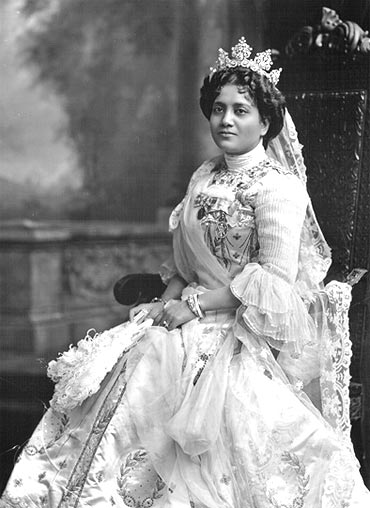
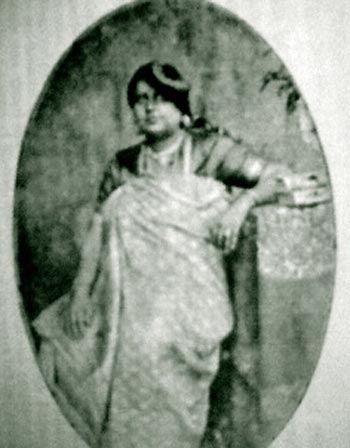
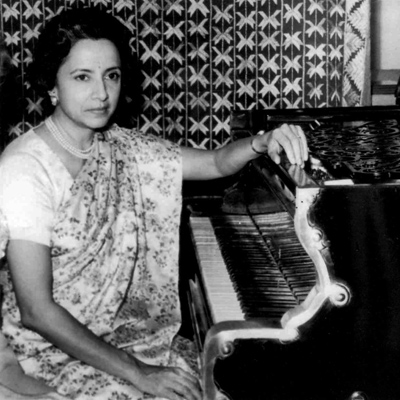
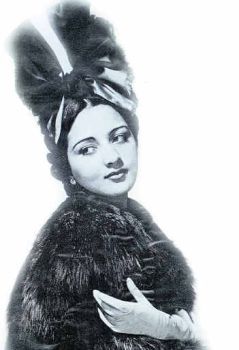


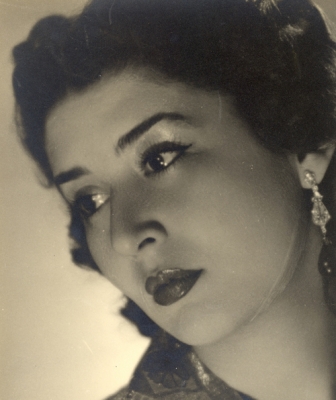
Comment
article